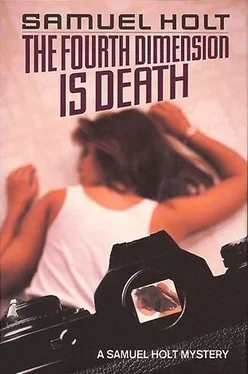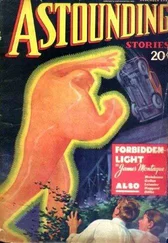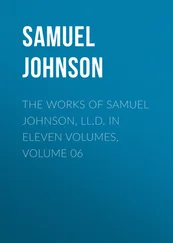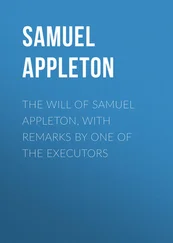Twenty minutes later, the phone did ring at last. I let Robinson answer as usual, while I sat at attention at the desk, and when he buzzed me it was to say the person calling was neither of the ones I’d expected, but was Terry Young. “I’ll take it,” I told him, and pressed the button.
Terry Young was the fellow I’d had dinner with in Brooklyn the night before last, when Dale Wormley was killed. We had first met nine years ago, he a reporter with the New York Daily News and I the hot new TV star he’d been sent to interview. We hated each other on sight, like cats, I seeing him as a professional fat slob, he seeing me as a posturing wimp, and it was only when our growing irritation with one another led to an honest — if loud-voiced — exchange of these views that we discovered it might be possible to get along after all. I now count Terry and his German-born wife, Gretchen, among my closest friends.
Picking up the phone, smiling already in anticipation, I said, “Hi. What’s happening?”
“Well, you, to begin with,” he said. He didn’t sound cheerful.
Now what? I said it aloud: “Now what?”
“Have you annoyed a couple of cops recently?”
“Oh, Christ, yes. How do you know?”
“They’re spreading the word,” he told me sourly, “among their friends in the press.”
Homicide detectives usually have a friend or two in the press, because the press quite naturally cultivates them. I said, “What word are they spreading?”
“This is third or fourth hand,” he warned me, “but what I get is that you are implicated in two ongoing homicide investigations and—”
“Hell.”
“—and are being uncooperative.”
“Damn.”
“Are you? And are you?”
“Not the way it sounds,” I told him.
“In other words,” he said, “yes.”
“Damn it, Terry,” I said, “does this mean I’m going to get a million reporters hanging around again?”
“Not a bit of it. In a situation like this, hearing from the other side could only spoil the story. You’ve already referred everybody to your PR people, haven’t you?”
“Before this.”
“So that’s good enough for the troops. Mr. Holt declines comment through his spokesperson.”
“Shit.”
“May I quote you?”
“No.”
“Well, how about for real, then?”
Was he serious? I said, “In your column, you mean?”
“It’s up to you,” he said. “If you want to get your side of the story out, I’m your man. If not, not.”
“I hate to hear me saying this to you, Terry, but I’d better talk that over with Mort first.”
“I don’t hate to hear you saying it,” he told me. “It shows a certain maturity at long last. These two homicides they’re tying you to. The first one was the guy imitating you on the commercials, right?”
“That’s right.”
“What’s the other?”
“A girl named Kim Peyser.”
He had me spell it, and then said, “What’s the link?”
“To me? There is none, that’s the dumb part of it.”
He let the silence on the phone line grow a certain amount of fur, and then he sighed and said, “Listen, Daddy. Do you want to tell me the facts yourself, or do you want me to hear them in the gutter?”
It was my turn to sigh. “They haven’t released this yet,” I said, “so far as I know.”
“For my information only. Not for use without your consent, not for attribution without your consent.”
So I told him about the name written in blood and why it was a fake, and he said, “Hold on,” and there was a brief silence, and then he said, “By God, you’re right. That’s the way you make an H.”
“I demonstrated that for Feeney and LaMarca,” I told him, “and they just sailed over it and kept on asking questions about my whereabouts at the time of the murder and all that crap.”
“Why, do you suppose?”
“I really don’t know. Mort said it might have something to do with twitting a celebrity.”
“Well,” he said, “there are cops who like the idea of putting the arm on a celeb, because guess who else gets in the newstape at ten o’clock. Did you get the idea they were needling you?”
“No. To be honest, the only idea I had was that they were ignoring me. And ignoring the facts of the case.”
“I’ll see what I can find out about them. Feeney and LaMarca?”
I agreed that was their names, and promised to check with Mort before the end of the day about granting him an interview, and we hung up, and then I had to decide if this was a legitimate excuse to call Mort before he got around to calling me. I knew it really wasn’t, so it took me nearly ten minutes to convince myself it was and make the call. Mort came on the line saying, “No news yet, I’m afraid. I have some calls out and I’m waiting for a response.”
“This is something else.”
I told him about Terry’s information, and the offer of a rebuttal in Terry’s column. He brooded about that briefly, saying, “Mmmmmm,” and, “Uh-huh, uh-huh, uh-huh,” and finally deciding, “No. At least not yet.”
“If you say so,” I said, sorry that he had.
“If the rift is reparable,” he pointed out, “it would be better to repair it. The only reason to make a public issue of this would be a desire to annoy the police officers involved.”
“I do have that desire,” I said, “but I can see you’re right. All right, I’ll tell Terry no.”
“Try not to tell him anything else along the way,” Mort suggested.
I laughed. “He already pumped me dry.”
“I might have known.” Mort sighed again, and said, “Well, I’ll call you when there’s anything to report.”
“Thanks, Mort.” I was about to hang up when another thought struck and I said, “Wait a second. Mort?”
“Yes, I’m still here.”
“Do you have today’s paper handy?” I knew he would, an infinitesimal part of the dumpster that was his office. “The one with Kim Peyser’s death in it.”
“Why?” he asked, suspicion deep in his voice.
“I want to know the address. Was she killed at home? She lived on West 74th Street.”
“Sam,” he said, “tell me something. Is our friend Packard taking an interest in this case after all?”
“No no no,” I told him, hearing myself protest too much. “I just want to know where I was supposed to be while I was walking home from lunch with you.”
“Hold on,” he said, and I could hear shuffling and rattling in the background, and then he came back to say, “Here it is. An apartment at 497 West End Avenue.”
West 74th Street crosses West End Avenue, so it could still be the same place. “Would that be in the seventies?”
“Well, let’s see,” he said. “I have my trusty Manhattan guide here, for the cross-streets. Let’s see; West End Avenue. Drop the last number, divide by two, add fifty-nine or sixty. No, that would be just below 86th Street, a block or two.”
So she wasn’t killed at home. Whose kitchen floor was that? “Thanks, Mort,” I said.
“Be good,” he warned me.
“I’ll do better than that,” I assured him. “I’ll be careful.”
It was just a few minutes after I called Terry back, when we’d reluctantly agreed that Mort was undoubtedly right that I should keep my mouth shut in public for a while, when I noticed that I had written the same address twice today on the scratch pad on my desk. 497 West End Avenue. Once, it was the address Mort had given me of the place where Kim Peyser had been found murdered. The other time, it was the address in the phone book for the J Kaplan who had lived with Dale Wormley.
Kim was murdered in Dale Wormley’s apartment? What on earth was she doing there?
Читать дальше












